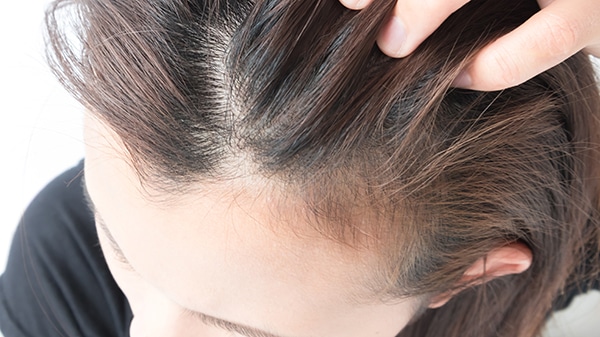
Under normal conditions, scalp hairs live for about three years (the anagen, or growing, phase); they then enter the telogen, or resting, phase. During the three-month telogen period, the hair root shrivels up into a small white “club,” then the hair falls out. It is therefore normal to lose about 100 hairs every day, more of them on days when shampooing loosens the hairs that are ready to fall out. The hairs are then replaced by the body.
Sometimes people worried about losing their hair start noticing hairs on their pillow or in the sink, not realizing that they’ve always been there. A close look at these will usually reveal the white club at the end, showing that these hairs were already dead. Normally, about 10% of scalp hairs are in the telogen phase.
There are several circumstances that produce a “shock to the system” that alters the hair growth rhythm. As a result, as much as 30%-40% of the hairs can cycle into telogen. Three months later, hairs come out in a massive shedding (effluvium), especially near the front of the scalp. These include childbirth, high fever, sudden weight loss (crash dieting), surgery, severe illness, and severe stress or loss.
None of these has to be life-threatening, nor does hair loss always follow them. (It can happen after one pregnancy but not the next.) But when the hair falls out, it’s all over the place — covering the pillow, clogging the drain, and so forth. Paradoxically, the more dramatic the hair loss, the better the prognosis, because when the body gets back into normal rhythm, most if not all of that hair comes back. No special treatment is needed. Normal shampooing can continue, because this only loosens hairs that were going to come out anyway.

